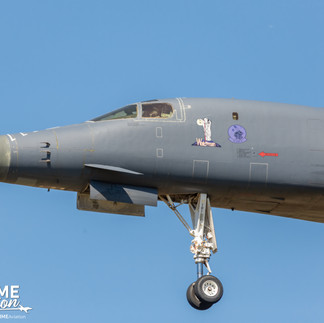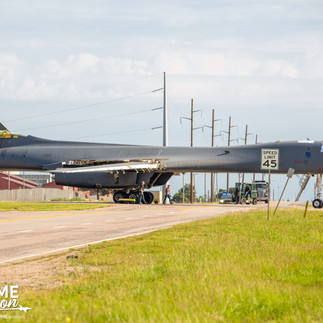Evolution of the Watchman
- Rob Stephens

- Jun 2, 2021
- 2 min read
It is not every day that you get to see a symbol of American air power going from a powerful aerial machine to disassembled pieces, never to fly again. Watching the evolution can make one dejected, even knowing this happens all the time and has happened to the B-1B fleet many times before. This aircraft is headed to the National Institute for Aviation Research at Wichita State University in Kansas, to be used to create a digital replica of an intact B-1B. That digital replica will enable the US Air Force to study not only structural fatigue, but to digitally design and prototype parts before being put on fleet aircraft.
According to the Air Force Global Strike Command spokesperson we spoke with, "A6101 is a high flier in the fleet and has 10,213 flight hours. It is currently at Tinker Air Force Base, Oklahoma, where it is undergoing some disassembly to facilitate transport, and it will be sent to the National Institute for Aviation Research (NIAR) at Wichita University, where it will undergo further deliberate disassembly and inspection of critical structure. As a good representation of the rest of the fleet, the data gained from this effort will help inform Full Scale Fatigue Testing (FSFT) and update crack growth curves, and thus refine inspection intervals and design repairs. It will also supplement the digital twin effort that began with A5092 last year, providing additional structure and parts to scan that were not available at the time due to A5092 not being a complete aircraft when it was pulled out of AMARG."
In the morning of April 19, 2021, B-1B 86-0101 "Watchman" made her approach to Tinker Air Force Base, Oklahoma, working the pattern for 40 minutes, her four General Electric F101 afterburning turbofans making their final thunderous roar over Midwest City, OK. At exactly noon, she made her final full stop landing and turned off the engines forever. She was towed into the hangar and began her disassembly process.
At 9:00 AM on May 14, 2021, Watchman emerged from the maintenance hangar missing her engines, nose, flaps, slats, rudder, elevators, and ejection hatches, among other avionics removed from the aircraft by the personnel at the Oklahoma City Air Logistics Center. She was towed across Douglas Boulevard and into the MROTC hangar. This was our first look at her partially disassembled state and was tough to watch as she was slowly towed across the street and into the hangar.
She emerged again on June 1, 2021 as she was towed out of the hangar and put on jack stands, so the gear could be removed in preparation for transportation to NIAR on a flatbed trailer. The forward fins, wings, engine nacelles, and vertical stabilizer have been removed. Even the vortex generators on the aft of the aircraft have been removed.





































Comments